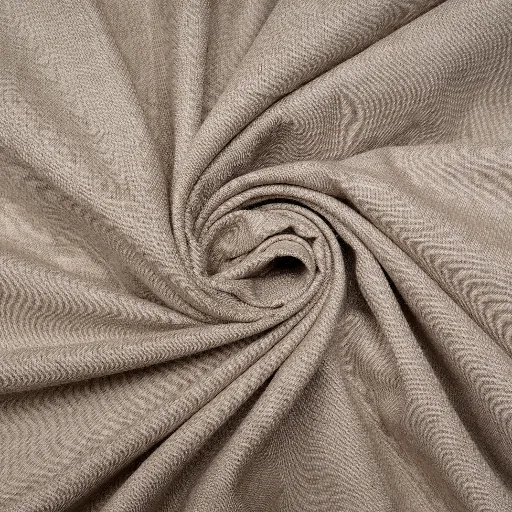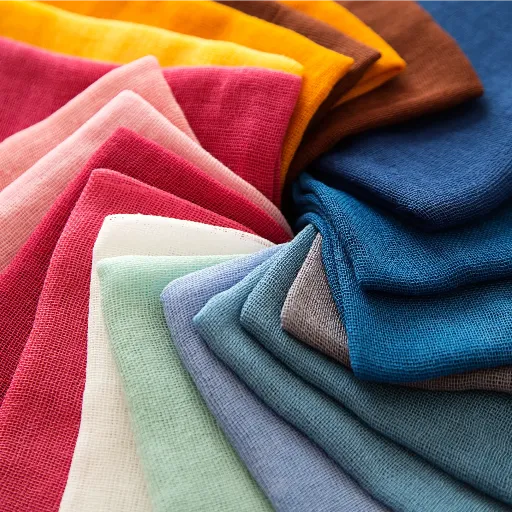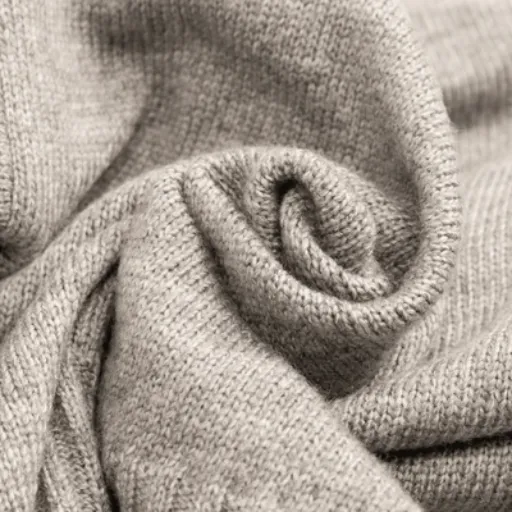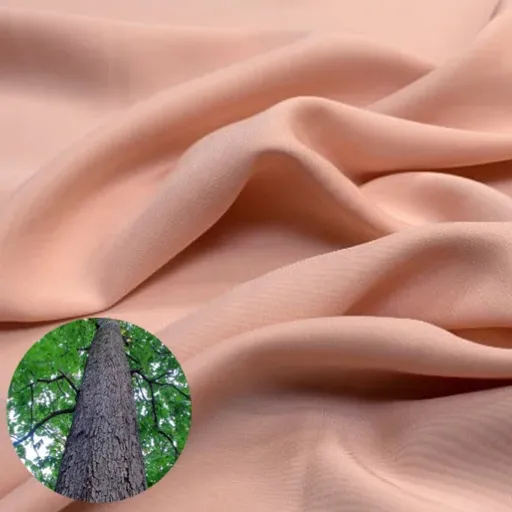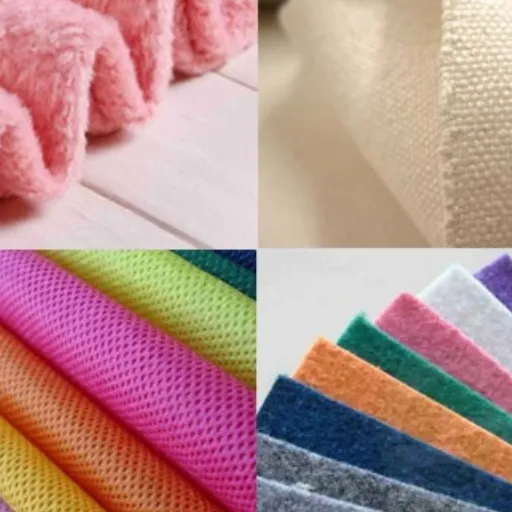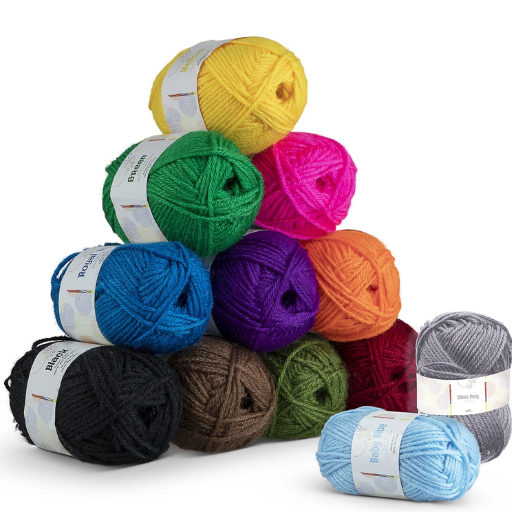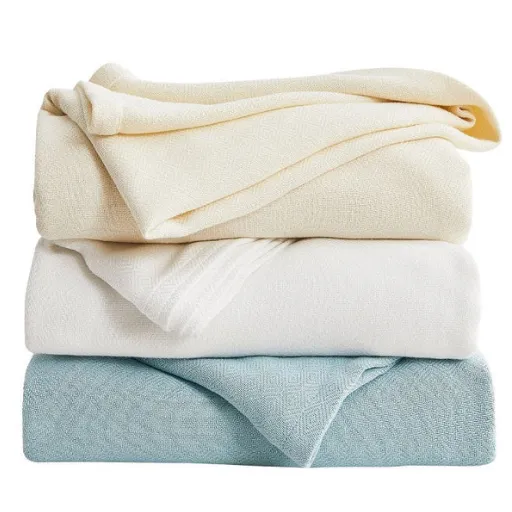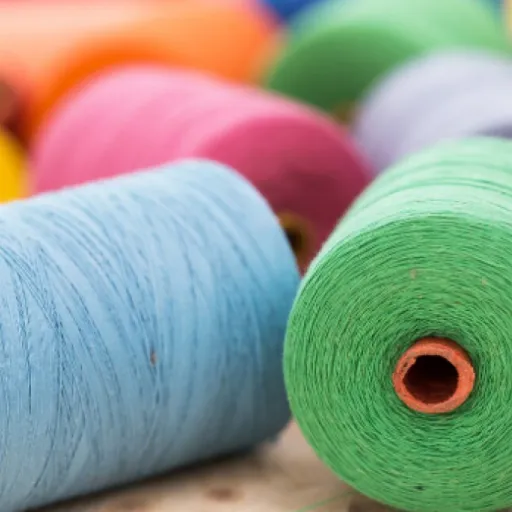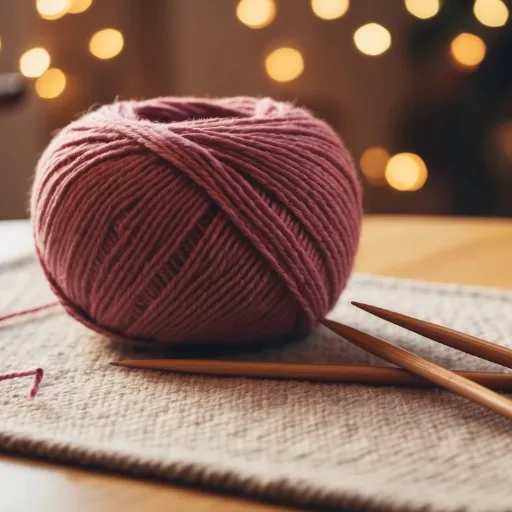Dyeing acrylic yarn can be a little overwhelming, especially for those who are used to natural fibers like wool or cotton. Compared to natural yarns, acrylic is made of artificial stuff, and this is why specific care procedures and particular colors are required for the sort of longevity and induction of color that one might so desire to achieve. So, if you’re in the category of these people who ask questions on how to turn a plain acrylic yarn into amazing, wonderful, colored things, worry not, because you have reached the best tutorials. A bowtight encyclopaedia of all the ways you need, according to anecdotes and explanation about ways to color your acrylic yarn, with a focus on different methods and best practices appropriate for synthetic fibers. Your first recolorable project, dyeing acrylic yarn, will be easy with that post providing the necessary knowledge and hints.
Introduction to Acrylic Yarn
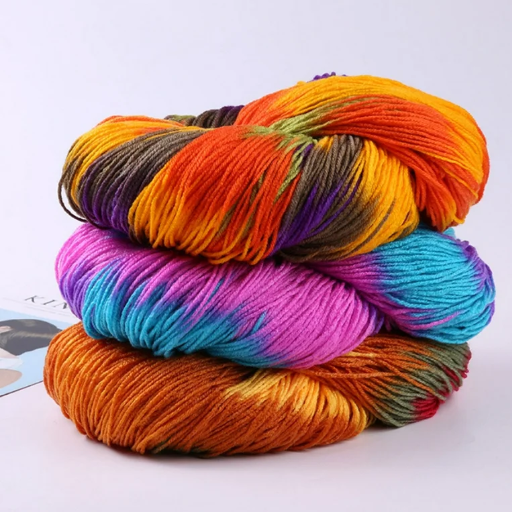
Acrylic is a synthetic textile derived from polymers, particularly acrylonitrile, through a chemical reaction. It is highly sought after due to its appropriateness, hardiness, flexibility, and artistic value. Acrylic is a slippery material that, unlike natural fibers, does not attract bugs, and little effort is required to clean it, as most can be comfortably washed in a washing machine. Considering that acrylic is available in every color and texture, it is an impeccable material for a variety of applications, from sweaters and scarves to home decorative elements. However, being plastic during the dyeing process makes it behave differently than it would towards natural fibers. Instead, it will call for such procedures as certain dye ways and dyes that are intended for man-made fibers alone.
How is Acrylic Yarn Made?
The process by which acrylic fibers are made begins with the formation of the monomers that are involved, and the one that is primarily used for this purpose is acrylonitrile. It is mostly done using the suspension or, less commonly, the solution method of polymerization, in which acrylonitrile is blended with some other types of monomers, like methyl acrylate or even vinyl acetate, to enhance the fiber with some elements that will be very useful in enhancing the dyability of this among other properties. When the reaction is over, the formed product, the so-called polyacrylonitrile, is made into a gel, which in its turn is fed into a spinneret to make continuous yarns.
These filaments are fixed using wet or dry spinning, which is determined by the process being carried out. In wet spinning, the filaments, after being extracted, are exposed to coagulation solution, while in dry spinning, the filaments are hardened by the use of heat to dry the solvent, thus hardening the filaments. These hardened fibers undergo further processing, primarily after extrusion, including pre-bonding steps such as washing, stretching, and drying. Once the fibers have reached that stage, post-treatment processes are required to apply a crimp to the filaments and either to block or cut them to staple length, before they are finally combed or spun to become yarn.
The acrylic fiber yarn produced may then be dyed or otherwise treated to achieve other properties, such as softness, color fastness, and environmental resistance. Innovations in treatment processes have seen the creation of dyes whose colors remain vivid over time, while finished processes enhance the surface without compromising the strengths of an acrylic fiber. Thus, the acrylic yarn is in great demand and is utilized in a number of industrial uses.
Unique Properties of Acrylic Yarn
- Durability
Acrylic yarn is highly durable and not easily expelable when it comes to environmental factors, most especially light and dampness. As such, it is one of the most versatile materials that suits both indoor and outdoor purposes since it is also very weather-resistant. Research indicates that acrylic fibers do not elongate even with exposure to sunlight for long periods, unlike many other types of natural fibers.
- Moisture Resistance
With respect to absorbing moisture, wool and cotton, for example, are natural fibers and allow more moisture to be absorbed as opposed to synthetic fibers of acrylic yarn, which has an average moisture regain of 1-2%. This attribute is, however, important, so in an actual sense, there is no such aspect of absorbing any amount of moisture. Ergo, the product is water-resistant and dries quickly, even in hot and humid climatic conditions.
- Thermal Insulation
Acrylic yarn is a great insulator. Some of the very warm garments like sweaters, scarves, and gloves use it as a filling material more than or equally with other materials. My understanding of this attribute is that acrylic has lower thermal conductivity compared to many of its other artificial counterparts and is very good for cold environments.
- Light Weight
Although acrylic yarn is resistant to fatigue stress and strain, the material itself is lightweight, making it cost-effective. This feature particularly applies to clothing where the kind of material used should not be heavy, as it would be impractical or uncomfortable.
- Color Retention
Yarn made from acrylic performs well when it comes to dyeing, as it has a strong affinity for dyes. This suggests that clothing or projects containing acrylic content retain their appearance even after frequent washing or exposure to sunlight, with a color retention rate of up to 90%, as measured by ISO standards.
Understanding the Challenges of Dyeing Acrylic Yarn
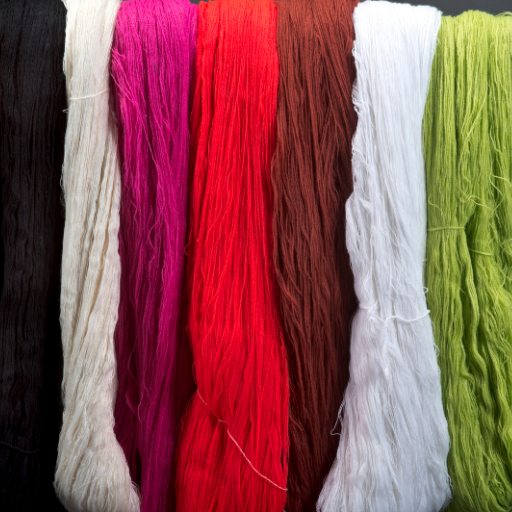
Although there is much that can be done, research on how to dye acrylic also presents its own problems since the fabric is not natural. Acrylic does resist most of the off-shelf dyes and thus a need is seen to produce experimental dyes for acrylics, which includes the disperse or cationic dyes. Such dyes have to be applied at a certain temperature, and the pH is taken into consideration to assist in dyeing’s penetration and fixation. Furthermore, precision tools are required in some instances because uneven dyeing can result in numerous spots and lines. Another problem is dyeing, which requires significant time, effort, and resources to produce, often involving toxic and hazardous chemicals. Hence, it is important that manufacturers put into practice the right techniques for dyeing in order to conserve colors, prolong their life, and last but not least, reduce the damage to the environment.
Why Traditional Dyeing Methods Fail
Often, common practices used to dye acrylic fibers are unsuccessful because the material’s constitution is not chemically compatible. This unexpected behaviour of acrylic is in part due to the fact that it is hydrophobic, meaning that the fibers have no capacity to absorb water, so normal techniques of dying become problematic. Additionally, the resistance to penetration and retention of dyes due to the presence of strong intermolecular forces within the fibers, resulting from the high percentage of acrylonitrile in the polymer units, mitigates the ease of dyeing. Such resistance necessitates the use of further aids and increased temperature, which enable further increments in recording the color, albeit at the expense of greater energy consumption and running expenses.
Yet another limiting factor is the fact that most traditional dyeing techniques are not acceptably efficient with the current environmental standards. This is because usually the techniques used, and especially the alternative methods, mainly involve substances such as synthetic, non-biodegradable dyes or the use of toxic mordants. Also, in these instances, high quantities of water and energy consumption exhaust the sustainable resources. These drawbacks mean that the regulations that affect those industries that have to comply with the very strict rules of using environmentally friendly water conservation and other sources make the traditional mechanism operationally difficult and undesirable. Technologies and innovative dyeing methods, like supercritical carbon dioxide dyeing or plasma treatment, are expected to emerge as firm requirements in overcoming these lacunae in the near future.
The Science Behind Acrylic Resistance to Dye
Comparison with Dyeing Natural Fibers
|
Key Parameter |
Acrylic Yarn |
Natural Fibers |
|---|---|---|
|
Fiber Composition |
Synthetic, petroleum-based |
Organic, protein- or cellulose-based |
|
Absorption Rate |
Low moisture absorption |
High moisture absorption |
|
Traditional Dyes Compatibility |
Ineffective without special dyes |
Highly compatible |
|
Heat Resistance During Dyeing |
Limited tolerance to high heat |
Higher heat tolerance |
|
Required Dye Type |
Disperse dyes or specific synthetic dyes |
Natural or acid-based dyes |
|
Ease of Dye Penetration |
Challenging due to dense polymer matrix |
Easier due to porous fiber structure |
|
Durability of Color |
Long-lasting with correct dyes |
May fade faster, depends on dye type |
|
Cost of Dyeing Process |
Higher due to specialized dyes |
Typically lower |
|
Environmental Impact |
Higher, synthetic dye runoff |
Often lower, biodegradable options |
|
Color Vibrancy |
Requires advanced techniques for vibrancy |
Naturally vibrant with simple methods |
Effective Dyeing Techniques for Acrylic Yarn
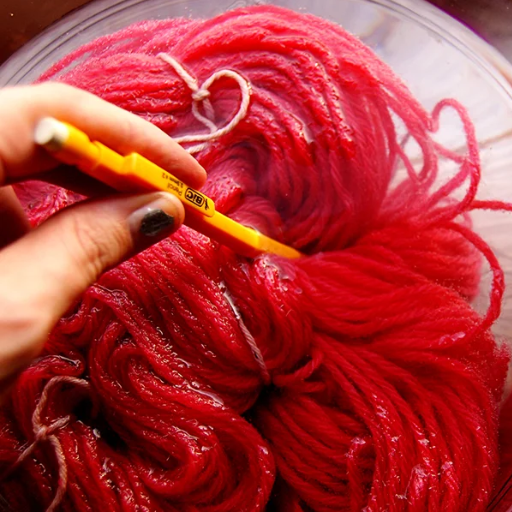
The synthetic quality of acrylic yarn necessitates the use of particular methods in dyeing it. The most efficient technique is the use of disperse dyes due to the fact that they are designed to attach to the acrylic fibers when developed; the acrylic fibers undergo a bonding process when heated. The process of dyeing acrylic usually involves the following steps:
- Preparation: Prior to dying it, prepare the yarn to feed it into the dyeing machine. Any stickers and discoloration on the yarn can be removed by cleaning it.
- Dye Bath: Dye bath should be formulated with the right concentration of disperse dye along with water and acetic acid for pH adjustment.
- Heat Setting: When in place the bath, it is gradually increased to be it 98-100°C (208-212°F) allowing the action of the dye in proper penetration of these dyes into the fibers.
- Cooling and Rinsing: Let the yarn cool down after reaching 98-100°C after simple heating to those conditions, after which rinse it intensively to get rid of free dye.
Moreover, these tactics will yield stunning hues, resulting in a smooth appearance with minimal splotchy areas and deep contrasts. Chemical dyes need to be utilized with proper avoidance strategies and protection resources mostly because of their unforgiving nature.
Using Disperse Dyes
Dyeing done with the use of disperse dyes is employed as a coloring agent in hydrophobic end products such as polyester, acetate, and nylon. For this kind of dyeing, the dye is dispersed into the water by using a dispersing agent, and heat is applied under pressure to dye the fiber structure.
Dyeing Procedure:
- Preparation: When such a background was given in preparation of the fabric or the yarn in order to remove oils, waxes, and other unpolluted contents for the better bonding of the dye and controlled even development of the color without any spots or sectioning.
- Dispersion: When working with this dye, break up the dye so that it becomes small enough to be dispersed by the correct dispersants. The size of the particle becomes important in this case since any failure to properly disperse the dye results in the formation of spots/streaks.
- High Temperature Dyeing: Dyeing at High Temperature: For this process, the dye in the dye bath is heated to a temperature within the range of 120℃ – 130℃(248°F to 266°F) and under pressure, so that the dye is effectively absorbed into the crystalline regions of the fiber. Conventional methods use machines like jet dyers that have better capability to control temperature since they are used for the purpose.
- Carrier Addition (if required): Some fibers, especially the hydrophobic polymer fibres, may require carrier or promoter organic compounds so as to enhance in dyeing at lower temperature conditions, though this is not applicable in the current technologies.
- Post-Dyeing Treatment: Stages of post-dyeing processes include final washing for the removal of dye remnants, including immobile dye particles, and crosslinking of the present dye to the material in order to improve its resistance to washing, light, and constitution purposes.
Key Considerations:
- pH Levels: An acidic pH in the range of 4.5-5.5 is desirable during dyeing to promote good bonding of the dye to the base polymer.
- Particle Size Control: Later nano-dispersion technology has facilitated the dispersion of dyes to be used more equally and clearly for more precise printing.
- Environmental Concerns: Disperse dyes, which are commercially effective, often involve high water and energy consumption. However, care for the environment has led to the development of inventions such as water-free dyeing processes and eco-dispersants that will not harm the environment.
Applying Specialized Fabric Paints
The use of commercial fabric paints necessitates accurate and appropriate methods in order to achieve lasting color intensity and uniformity across the canvas. Removal of any impurities typically involves such actions as fabric cleaning to get rid of oils or dirt, and even sizing agents that might endanger the adhesion of the paint. Surface preparation can also include the use of sound coatings or launders, depending on the character of the paint and the constitution of the surface.
Dye application harbors a variety of application methods that are influenced by the area and expected design. Some of the common ones include brush application for simple paintings and handwork, and airbrush application for polished and clean finishes. For more uniform results that may involve large areas of application, screen procedures and technologies that enhance the molecular mobility of ink directly on polyester fabric are mostly popular due to their greater consistency and efficiency.
Tips and Tricks for Successful Dyeing
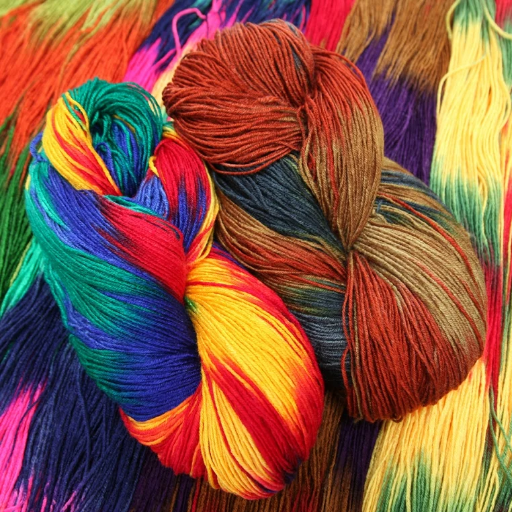
- Prepare the Fabric Thoroughly
Preferably, clean the item by washing to get rid of dirt, grease, or any finishing agents that can mar the effectiveness of the dyeing process. For better results, it is recommended to use a pre-treat detergent.
- Measure Dye and Additives Accurately
You have to precisely follow the instructions given by the manufacturer on the concentration of the dye and on additional substances like fixers and salt. The best results are obtained when accurate quantities are used, since the colors are rich.
- Maintain Proper Temperature
It is during certain temperatures that dyeing is best carried out. Be sure to check and adhere to the recommended warm conditions for the time of dyeing process in order for the dye to get fused into the material properly.
- Agitate Regularly
It is very important to keep the material moving in the dye bath to prevent any unevenness and also to ensure that the dye spreads properly.
- Rinse and Fix Properly
Afterwards, the fabric should be thoroughly rinsed with cold water until the water runs clear. Apply a fixative to the fabric to preserve the color and durability of the fabric during laundry.
Preparing Your Acrylic Yarn
To get good dyeing results, one needs to prepare the acrylic yarn accurately, as in the case of bright and homogeneous dyeing. It should start with the correct washing of the yarn in order to get rid of any products obtained during production, oils, and other substances that could affect further coloring. A weak soap or a synthetic substance can be used in warm water, but remember to wash the residue. Slide the threads off the ball and do not fold the result; a large ring- a skein- is better for good coverage by the dye. Avoid excessive compression since this will lead to the penetration of the dye into the core. The capacity of dyes to wipe off will be increased by pre-soaking the yarn in a solution of warm water and a dispersing agent or a wetting agent. This is an external intervention that allows the dye to be adsorbed better on the fibers and also forgoes a darker and more intense tone at the end. While getting ready, it should never be the case that the yarn is being roughed because it could easily tangle the yarn or destroy the fibers, and this affects the final product.
Avoiding Common Pitfalls
In dyeing yarn, a common problem arises: uneven dye distribution, often due to insufficient agitation. To help with this problem, make sure to periodically and gently shift the yarn in the dye liquid. As a rule, however, incorrect control over temperature should be avoided since it may cause overheating of flax or, on the contrary, failure of dye fixation. When applying dyes, first examine the red dye. Then, use a thermometer to heat the water to the required dye immersion temperature.
Another common error in the process is the inefficiency in using dyes, as their proper ratio is not maintained, leading to effects such as dull or uneven color. Weigh all components for cashing veneer accurately using a digital scale. Follow the suggested formula for calculating baskets for the rest of the dyes. Always make a scale test with color consistency and strength of dye before using the primary yarn. These simple operations help eliminate any potential errors and facilitate the achievement of a flawless and respectable outcome.
Experimenting with Color Blending
Comparative Analysis: Dyeing Acrylic vs. Natural Fibers
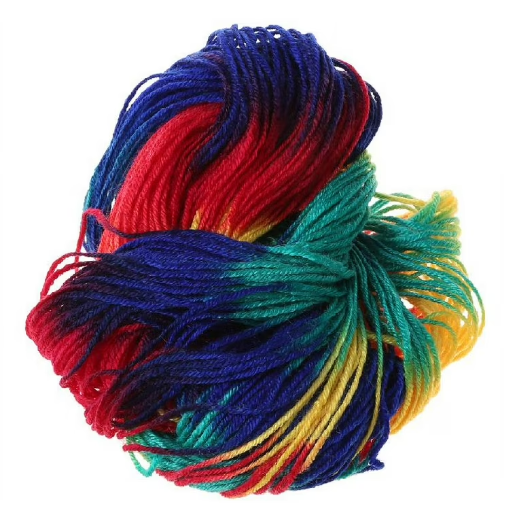
There are a few key differences between acid and natural fiber in terms of their coloring. For instance, in the context of hydrophobic and synthetic acrylic fibres, the usage of some zwitterionic or cationic dyes is necessary. These dyes attach to the polymer of the fiber via intermolecular forces under controlled conditions, often involving high temperature and strict pH for absorption to occur. On the other hand, cellulosic or protein fibres like cotton or wool have superior dyeability attributed to their moisture uptake as evidenced by increased affinity towards basic dyes, acidic dyes, activated dyestuffs, etc., depending on the cellulosic or protein fibre.
One would assume that the most title-worthy distinction would be in terms of the preparations and processing requirements. Specifically, to effectively dye acrylic fibers, the fiber must be pre-treated. However, the use of mordants for acrylic dyeing is not always essential. In addition to this, acrylic dyeing, being a synthetic process, requires more water as well as energy. In the end, natural textiles are simply easier to dye in spite of the versatile textile dye that acrylics are, and as such a set of precise and finished windows is required to color the textile.
Process Differences
However, the textures differ, and the color immersion of all fibers varies due to the differences in floating these fibers. It’s well-known that natural fibers, e.g, cotton and wool, are hydrophilic because water and dyestuffs absorb easily in such types of fibers. In its pure form, the dyeing process is simple, as it requires minimal equipment and energy, at least in its water-based nature. However, fixing dyed colors on natural fibers often involves mordanting or some other chemical means to lock the dyestuff onto the fiber structure.
On the other hand, synthetic fibers such as acrylic have a phobia of water and are therefore difficult to dye, making them the center of intense treatment in dyeing. Such fibers often have neutral or, in most cases, thiol-reactive cationic dyes employed for adherent bonding, which are conducted under very high temperatures and pressure in order to facilitate soaking through the fibers’ structure. Modern dye design development, whereby dye-plastics and dispersants are used, has been beneficial for polyester dyeing, although the increased efficiency comes with increased resource consumption. It is essential to be aware of and understand such differences to refine the theoretical aspects of the dyeing process, while also addressing the issue of preservation.
Outcomes and Results
Reference Sources
-
DIY Hand-dye Acrylic Yarn with Acrylic Paint
- This guide explains how to dye acrylic yarn using acrylic paint. The process involves soaking the yarn, mixing acrylic paint with water, and applying the mixture to the yarn. The dyed yarn is then left to dry for several hours. This method is simple and uses readily available materials, making it ideal for DIY enthusiasts.
-
- Rit Dye provides a comprehensive guide for dyeing yarn, including synthetic options like acrylic. The guide emphasizes using Rit DyeMore for synthetics and offers techniques such as ombré, dip dye, and speckled effects. It also includes detailed instructions on preparing the yarn, creating the dye bath, and post-dyeing care. This resource is ideal for those seeking professional-looking results with vibrant and long-lasting colors.
Frequently Asked Questions (FAQs)
Q: Can You Dye Acrylic Yarn with Commercial Dye?
A: Yes, it is possible to dye acrylic yarn using commercial dye options like Rit or Dylon. These dyes are formulated to work well with synthetic fibers, including acrylic. When dyeing, ensure that you prepare a proper dyebath, using hot water and the dye according to the instructions. It’s important to soak your yarn thoroughly to achieve an even color. Additionally, you might want to add vinegar or citric acid to the dye bath to help set the color. Keep in mind that while acrylic can take color, it may not yield the same vibrancy as natural fibers like wool yarn.
Q: What is the Best Way to Hand-Dye White Acrylic Yarn?
A: The best way to hand-dye white acrylic yarn is by using a method that allows you to control the saturation of color. You can use food coloring or commercial dyes for this purpose. Start by preparing your yarn, making sure it is clean and in a hank or skein form. Create a dye bath with your chosen dye, and then soak your yarn in it, ensuring to squeeze out the excess water before placing it in the dye. For a more complex effect, you might consider an ombre technique where you gradually add more dye to achieve a darker color at one end. After dyeing, rinse your yarn until the water runs clear to prevent bleeding.
Q: Can You Use Food Coloring to Dye Acrylic Yarn?
A: Yes, you can use food coloring to dye acrylic yarn, especially if you are looking for a DIY approach. Food coloring works best when you create a saturated dye bath and soak your yarn for longer periods. Begin by mixing the food coloring with water to create your dye solution, and then immerse your yarn, making sure to saturate it fully. It’s crucial to monitor the process, as colors can vary depending on the concentration of the dye. Note that food coloring may not achieve the same permanence as commercial dyes, so be careful with washing your finished project to avoid fading.
Q: How Can I Overdye My Acrylic Yarn for a Different Shade?
A: Overdyeing acrylic yarn is a great way to change the color or create a unique shade. To do this, you should start with a lighter color yarn that you want to transform. Prepare a new dye bath with your desired dye, and make sure the yarn is clean and wet before placing it in the bath. The key is to soak your yarn adequately, allowing the dye to penetrate the fibers well. Keep an eye on the dyeing process, as it might take some time for the new color to develop. After achieving the desired shade, remember to rinse thoroughly to prevent any bleed during future washings.
Q: Is It Possible to Use Acrylic Paint for Dyeing Yarn?
A: While it is not the most common method, some crafters do use acrylic paint to dye yarn. This technique involves mixing the paint with water to create a dye solution. Similar to other dyeing methods, you will need to soak your yarn in the mixture, ensuring it is well saturated. Be cautious, as the paint can create a stiff texture compared to traditional dyes. It’s advisable to test on a small swatch first to see how the color sets and how the yarn feels. If you decide to use this method, be prepared for the possibility of the color bleeding during washing.
Q: How Do You Prevent Bleeding When Dyeing Acrylic Yarn?
A: To prevent bleeding when dyeing acrylic yarn, it is important to use a dye that is specifically formulated for synthetic fibers. After dyeing, always rinse your yarn thoroughly in cold water until the water runs clear, as this helps remove excess dye. Additionally, using vinegar or citric acid in your dye bath can help set the color. If you are concerned about future bleeding, consider washing your finished project in cold water with a gentle detergent. Storing your dyed yarn away from direct sunlight can also help maintain its vibrancy and prevent fading.








